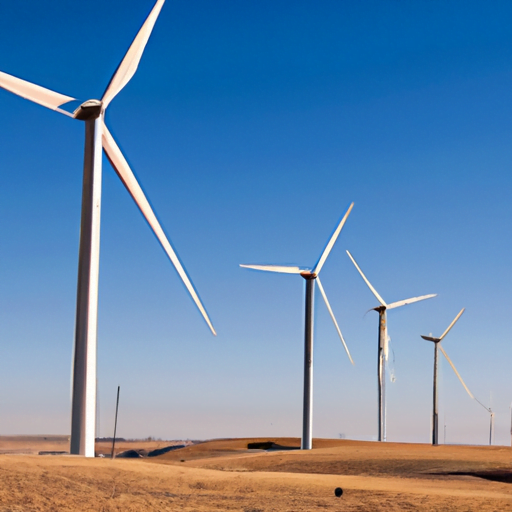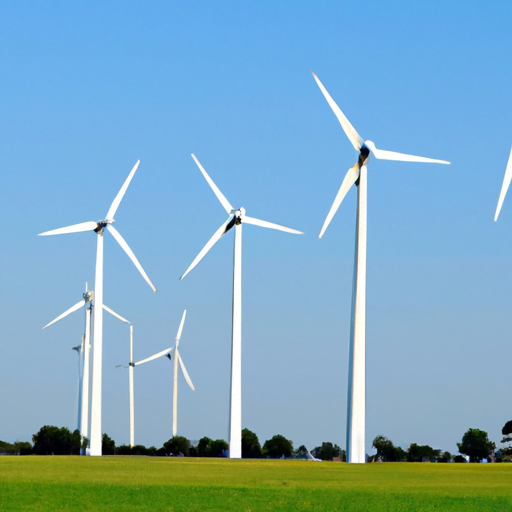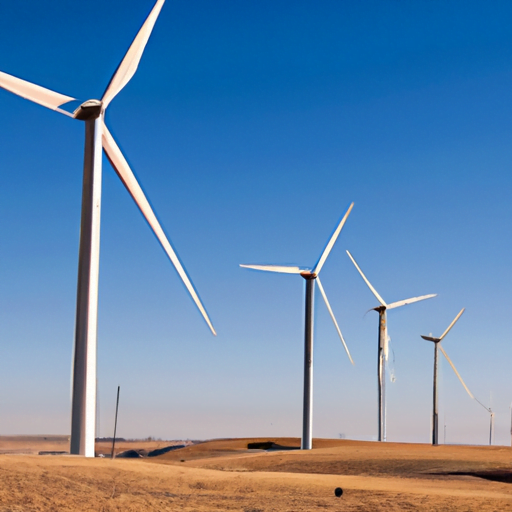Have you ever wondered how much it would cost to live off the grid? Maybe you’ve heard stories about people who have taken the leap and disconnected from the traditional power grid, relying on alternative sources of energy and sustainable living practices. But what does it actually take to make this transition? In this article, we will dive into the cost of going off the grid and explore the financial implications of this lifestyle choice.
Living off the grid refers to the decision to disconnect from public utilities such as water, electricity, and gas. Instead, individuals or households generate their own power and collect their own water, often through solar panels, wind turbines, rainwater harvesting systems, and other self-sustainable methods. While this lifestyle may bring about a sense of independence and environmental consciousness, it is important to consider the financial aspects.
The cost of going off the grid can vary greatly depending on various factors. The initial setup cost can be substantial, including the purchase and installation of equipment and infrastructure needed for generating power and collecting water. Additionally, ongoing maintenance and repairs could add up over time. However, it is worth noting that the long-term savings on utility bills can offset these initial expenses.
In the upcoming sections of this article, we will delve deeper into the specific costs involved when going off the grid. From solar panel installations to water collection systems, we will explore the different components that contribute to the overall price tag of living off the grid. Whether you are considering this alternative lifestyle or simply curious about the financial implications, this article will provide you with a comprehensive understanding of the cost of going off the grid.

Introduction
What is off-grid living?
Off-grid living refers to a lifestyle in which individuals or households are self-sufficient and do not rely on public utilities such as electricity, gas, or water supply. It involves generating one’s own power, filtering and storing water, and managing waste independently. Off-grid living typically involves living in remote areas or adopting sustainable practices in urban areas.
Why do people choose to go off the grid?
There are several reasons why people choose to go off the grid. Firstly, it allows individuals to reduce their carbon footprint and live a more sustainable lifestyle. By generating their own renewable energy and managing resources efficiently, off-grid living contributes to a healthier environment. Secondly, it provides a sense of independence and self-sufficiency. By relying less on external resources and utilities, individuals have more control over their daily lives. Lastly, off-grid living can be a way to escape the stresses of modern life and reconnect with nature. Living in remote locations allows for a simpler and more peaceful way of life.
Factors Influencing the Cost
Location and land cost
One of the key factors influencing the cost of going off the grid is the location and the cost of land. Land prices can vary significantly depending on the area, with remote and off-grid locations typically being more affordable. However, it is important to consider accessibility to basic amenities such as grocery stores, medical facilities, and schools when choosing a location.
Energy generation and storage options
The choice of energy generation and storage options is another important factor to consider when calculating the cost of going off the grid. Solar power systems, wind turbines, and hydroelectric systems are popular renewable energy sources. However, the initial investment cost of these systems can vary greatly. Additionally, the size of the system required to meet your energy needs will also impact the cost.
Water supply and filtration systems
Having a reliable and clean water supply is crucial when going off the grid. Depending on the location, accessing clean water may require drilling a well or installing a rainwater harvesting system. Additionally, water filtration systems are necessary to ensure the water is safe for consumption. The cost of these systems will depend on the specific needs of the household and the local regulations.
Waste management systems
Proper waste management systems are essential for off-grid living. Composting toilets, greywater filtration systems, and recycling programs are commonly used to manage waste. The cost of these systems will vary depending on the size of the household and the desired level of sustainability.
Initial Investment Costs
Solar power systems
Solar power systems convert sunlight into electricity and are a popular choice for off-grid living. The cost of solar panels, inverters, and batteries will depend on the size of the system and the energy needs of the household. On average, a complete solar power system can range from $10,000 to $40,000.
Wind power systems
Wind turbines are another option for generating off-grid electricity. The cost of wind power systems will depend on the size of the turbine and the average wind speed in the area. On average, wind power systems can range from $15,000 to $50,000.
Hydro power systems
If you have access to a flowing water source such as a river or stream, hydro power systems can be a reliable and efficient option. The cost of hydro power systems will depend on the flow rate and head height of the water source. Small-scale hydro power systems can range from $20,000 to $100,000.
Battery storage systems
Battery storage systems are essential for storing excess energy generated by renewable sources for use during periods of low generation. The cost of battery storage systems will depend on the capacity and technology used. On average, battery storage systems can range from $5,000 to $20,000.
Water supply and filtration systems
The cost of water supply and filtration systems will depend on the specific needs of the household. Drilling a well can cost anywhere from $5,000 to $15,000, while rainwater harvesting systems can cost around $2,000 to $10,000. Water filtration systems can range from $1,000 to $5,000.
Waste management systems
The cost of waste management systems will depend on the size of the household and the desired level of sustainability. Composting toilets can range from $1,000 to $3,000, while greywater filtration systems can cost around $3,000 to $10,000. Recycling programs and waste disposal services will also contribute to the overall cost.

Operational and Maintenance Costs
Solar panel maintenance
Solar panels require regular cleaning and maintenance to ensure optimal performance. This includes removing dirt, debris, and snow from the panels. Additionally, the inverter and wiring may require periodic inspections. The cost of solar panel maintenance will depend on the size of the system and whether professional assistance is required.
Battery replacement and maintenance
Batteries used in off-grid systems have a limited lifespan and may need to be replaced every 5 to 10 years. The cost of battery replacement will depend on the type and capacity of the batteries. Regular maintenance, such as checking voltage levels and cleaning terminals, is also necessary to prolong the life of the batteries.
Wind turbine maintenance
Wind turbines require regular inspections and maintenance to ensure proper functioning. This includes lubricating moving parts, checking for damage or wear, and monitoring the performance of the turbine. The cost of wind turbine maintenance will depend on the size of the turbine and the accessibility of the site.
Hydroelectric system maintenance
Hydroelectric systems should be inspected regularly for any signs of wear or damage, such as leaks or erosion. Additionally, the control systems and wiring should be regularly checked for proper functioning. The cost of hydroelectric system maintenance will depend on the complexity of the system and the frequency of inspections.
Water system maintenance
Water supply and filtration systems should be regularly inspected and maintained to ensure clean and reliable water. This includes checking the quality of the water, replacing filters, and monitoring the performance of the system. The cost of water system maintenance will depend on the specific components and technology used.
Living Expenses
Food production and storage
Off-grid living often involves growing your own food and storing it for later use. The cost of food production will depend on the size of the garden or greenhouse, the choice of crops, and the availability of water. Additionally, the cost of preserving and storing food, such as canning jars or a root cellar, should be considered.
Water usage and conservation
Off-grid living requires careful water management and conservation. This includes minimizing water usage, repairing leaks, and implementing water-saving practices. The cost of water usage will depend on the specific needs of the household and the availability of water sources.
Waste disposal and composting
Proper waste disposal and composting are essential for maintaining a sustainable off-grid lifestyle. This includes separating recyclable materials, composting organic waste, and disposing of non-recyclable waste responsibly. The cost of waste disposal will depend on the local regulations and services available.
Heating and cooling
Heating and cooling off-grid homes can be challenging and may require additional investments. Options such as wood stoves, solar water heaters, and passive cooling techniques should be considered. The cost of heating and cooling will depend on the size of the home and the chosen technologies.
Potential Savings
Reduced energy bills
One of the main advantages of going off the grid is the potential for significant savings on energy bills. By generating your own electricity from renewable sources, you can eliminate or greatly reduce the need to pay for utility bills. Over time, the initial investment in off-grid systems can be recovered through these savings.
Decreased dependency on external resources
Living off the grid reduces dependency on external resources, such as fossil fuels and water supply infrastructure. As the costs of these resources continue to rise, off-grid living can provide long-term savings and stability. Additionally, being less reliant on external resources reduces the impact of price fluctuations and supply disruptions.
Financial Assistance and Incentives
Government grants and subsidies
Many governments offer grants and subsidies to encourage the adoption of renewable energy and sustainable living practices. These financial incentives can significantly reduce the initial investment costs of going off the grid. It is important to research and identify the available grants and subsidies in your area.
Tax incentives and rebates
In addition to grants and subsidies, there may be tax incentives and rebates available for off-grid systems. These incentives can further reduce the overall cost of installation and equipment. Consulting with a tax professional or contacting local authorities can provide more information on the available incentives.
Challenges and Considerations
Initial investment vs. long-term savings
While the initial investment in off-grid systems can be significant, it is important to consider the long-term savings and benefits. Although the payback period may vary depending on the specific costs and energy usage, many off-grid individuals find that the initial investment pays off over time through reduced utility bills and increased self-sufficiency.
Limited access to amenities and services
Living off-grid may mean sacrificing some conveniences and amenities that are readily available in urban areas. This includes limited access to grocery stores, medical facilities, and other essential services. It is important to carefully consider the distance and availability of these amenities when choosing an off-grid location.
Maintenance and troubleshooting
Off-grid systems require regular maintenance and occasional troubleshooting. Being self-sufficient means taking responsibility for the upkeep of the systems. It is important to have the necessary knowledge and skills to maintain and troubleshoot off-grid systems. Consulting with experts or attending workshops can help you gain the necessary knowledge.
Adapting to a self-sustainable lifestyle
Living off the grid requires embracing a self-sustainable lifestyle and making adjustments to daily routines. This includes being mindful of energy and water consumption, adopting sustainable practices such as composting and recycling, and embracing a simpler way of life. It is important to be prepared for these lifestyle changes and be willing to adapt to them.
Importance of Proper Planning
Assessing personal energy and water needs
Before going off the grid, it is important to assess your personal energy and water needs. This includes evaluating your current consumption patterns and determining the size of the energy generation and storage systems required. Consulting with experts can help you accurately estimate your energy and water needs.
Consulting with experts
Consulting with experts in the field of off-grid living can provide valuable insights and guidance. They can help assess the feasibility of off-grid living in a specific location, provide recommendations on the most suitable systems, and offer advice on maintenance and troubleshooting. Investing in expert advice can save you time and money in the long run.
Creating a budget and timeline
Creating a budget and timeline is essential for a successful transition to off-grid living. This includes estimating the costs of land, energy systems, water systems, waste management systems, and living expenses. Breaking down the costs and creating a timeline will help you stay organized and ensure a smooth transition.
Conclusion
Weighing the costs and benefits
The cost of going off the grid depends on various factors, such as the chosen location, energy generation and storage options, water supply and filtration systems, waste management systems, and living expenses. While the initial investment and ongoing maintenance costs can be significant, the potential long-term savings and benefits are considerable. Reduced energy bills, decreased dependency on external resources, and a self-sustainable lifestyle are some of the advantages of going off the grid.
Taking the leap into off-grid living
Deciding to go off the grid is a significant lifestyle choice that requires careful planning, investment, and commitment. By assessing your personal needs, consulting with experts, and creating a budget and timeline, you can successfully transition to off-grid living. The cost of going off the grid may be high, but the rewards of living a sustainable and self-sufficient lifestyle can be priceless.




